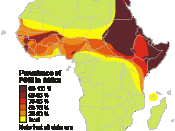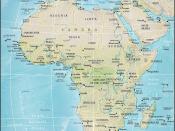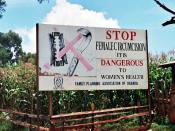NUR 471University of PhoenixFemale genital mutilation, also referred to as female circumcision, has become a controversial issue within the medical, legal and women and childrenÃÂs activistsÃÂ rights groups within the last few years. Exodus of refugees from African countries in which female genital mutilation is currently practiced to the West has created vulnerable populations within the United States in regards to the health concerns that surround female genital mutilation. Using OremÃÂs nursing model as a guide, this paper will describe this vulnerable population, the health problem and propose interventions.
Female genital mutilation cuts or removes the tissues around the vagina that give women pleasurable sexual feelings. This procedure is used for social and cultural control of women's sexuality. In its most extreme form, infibulation, where the girl's vagina is sewn shut, the procedure ensures virginity. In some cultures where female circumcision has been a tradition for hundreds of years, this procedure is considered a rite of passage for young girls.
Families fear that if their daughters are left uncircumcised, they may not be marriageable. As in most cultures, there is also the fear that the girl might bring shame to the family by being sexually active and becoming pregnant before marriage (Heitman, 2000).
It is illegal to perform female genital mutilation (FGM) in many countries, including the United States. Due to the illegalization of FGM, the procedure is hard to track statistically in the United States and although it is known that the procedure is being done illegally, the exact number is not known. The laws enforced by America cause this procedure to be done in the home or somewhere other than a medical setting. Often, it is performed by a family member or by a local "circumciser," using knives, razor blades, or other tools that may not be sterilized...


